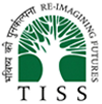Download this one page summary of the paper by clicking here.
What did we do?
Gallbladder cancer is a lethal digestive tract cancer disproportionately affecting women, for which the risk factors are not fully understood. In this recently published paper, we investigated if exposure to arsenic through drinking water increases the risk of gallbladder cancer in Assam and Bihar. Arsenic is a toxic heavy metal pollutant, known to cause specific cancers at high levels in the drinking water, food, ambient air or through occupational exposure (i.e., >50-100 µg /L). Assam and Bihar are two states in India that report a high burden of gallbladder cancer and high arsenic contamination in groundwater used for drinking (next to West Bengal and Punjab). We evaluated if there are any links between the two in these regions.
The study was carried out in large tertiary care hospital-settings that treat patients across different parts of Assam and Bihar. We recruited men and women aged 30-69 years from hospitals, with newly diagnosed, biopsy-confirmed gallbladder cancer (N=214) and unrelated cancer-free controls matched for age, sex, and state of residence (N=166). Long-term residential history, lifestyle factors (tobacco, alcohol, betel quid, diet and physical activity), family history, socio-demographics (age, sex, education, and occupation) and physical measurements (height, weight, waist circumference, blood pressure) were collected.
We assessed arsenic exposure based on their residential history since childhood and the corresponding average concentration of groundwater arsenic at district-level. Monitoring of groundwater drinking water samples from tube wells for arsenic and other pollutants is undertaken by the Ministry of Jal Shakti through National Rural Drinking Water Programme, and the Central Ground Water Board. The average arsenic concentration in our study regions, based on 2017-2018 data, ranged between zero and 448.39 µg/L. We classified study participants into three equal groups (G1-3): (average median levels of arsenic with inter quartile range): G1-0.45(0.0-1.19) (µg/L); G2-3.75(2.83-7.38) (µg/L); G3-17.6(12.34-20.54) (µg/L).
What did we find?
Over a third of our participants were exposed to levels more than WHO guideline limit of 10 µg/L, and a 6% were exposed to levels more than or equal to 50 µg/L. Participants exposed to arsenic concentrations averaging 1.38-8.97 µg/L in groundwater had a 2-times greater risk of GBC, while those exposed to even higher arsenic levels (9.14-448.39 ug/L) experienced a 2.4 times increased risk of gallbladder cancer. The duration of residence in regions at these levels ranged between 16 and 70 years. Participants who lived in regions with the highest arsenic levels consumed tube-well water with sediments, unsatisfactory colour, odour, and taste than participants in regions with the lowest levels of arsenic.
What is the significance of the findings?
The study was conducted by Indian scientists at the Public Health Foundation of India, Centre for Chronic Disease Control, Dr. Bhubaneshwar Borooah Cancer Institute, Mahavir Cancer Sansthan and Research Centre, Indian Institute of Technology- Kharagpur, in collaboration with an expert in environmental arsenic exposure related health effects, from London School of Hygiene and Tropical Medicine (LSHTM), in regions where both gallbladder cancer and arsenic contamination in drinking water are significant public health problems. First, the data offer preliminary insights on a risk factor with a potential preventive strategy for gallbladder cancer. Second, based on earlier recent surveys of household water levels it is estimated that 18-30 million people in rural and urban India (Podgorski et al 2020), including in our study regions, consume arsenic above 10 µg /L and up to 1500 µg /L in 2020. Thus, these findings may inform Jal Jeevan Mission-2024 fully aligned with Sustainable Development Goals of equitable clean and safe drinking water.
What gaps in knowledge do these findings fill?
Our study fills in the gap of a systematic epidemiological assessment in relevant Indian regions for the links between arsenic exposure and gallbladder cancer risk accounting for other important risk factors. Obtaining long-term residential history since childhood with information on potential sources of drinking water, is an important contribution of this study to the existing evidence base.
What gaps remain?
To date, there is limited evidence in the literature that gallbladder cancer risk is associated with arsenic exposure, with mixed results especially for low-moderate levels of exposure through drinking water, such as in our study. Our results are based on a sample size and could have been by chance. We also did not have biochemical validation from the primary drinking water source of the study individuals. So, our findings need to be confirmed in other regionally relevant settings of the country.
What is the take home message?
We investigated long-term exposure to differing levels of arsenic in drinking water, including low-to-moderate levels with gallbladder cancer risk among participants for residency durations of 15-70 years in two arsenic affected states of India. It may have broader public health implications, such as monitoring high-risk populations for early signs of arsenic poisoning. While the findings need to be confirmed, tackling ‘arsenic pollution’ may help reduce the burden of many other associated health outcomes. It is also important to note that in general, gallbladder cancers are very rare across other parts of the World and global regions with arsenic contamination in groundwater show positive correlations with gallbladder cancer. The experience gained in this study can also inform similar country settings that experience a high burden of gallbladder cancers and arsenic contamination in drinking water.
For queries, please reach out to the lead author of the study Dr. Krithiga Shridhar ([email protected]).
News Articles:


